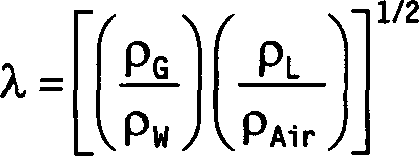Process for the epoxidation of olefins
A technology of olefins and hydrogen peroxide, applied in chemical recovery, organic chemistry, etc., can solve problems such as unresolved, catalyst poisoning, etc.
- Summary
- Abstract
- Description
- Claims
- Application Information
AI Technical Summary
Problems solved by technology
Method used
Image
Examples
Embodiment 1
[0083] Embodiment 1 (comparative embodiment)
[0084] Epoxidation was carried out continuously in a 300 ml tubular reactor filled with 3 mm diameter silica incorporating titano-silicate extrudates. The equipment also includes three liquid containers and corresponding pumps and liquid separation containers. Three liquid containers containing methanol, 60% by weight aqueous H 2 o 2 and propylene. Adjust 60% H with ammonia water 2 o 2 to pH4.5. The reaction temperature is controlled by means of an aqueous cooling liquid circulating in a cooling jacket, whereby the temperature of the cooling liquid is controlled by means of a thermostat. The absolute reactor pressure was 25 bar. The mass flow rate of the feed pump was adjusted so that the propylene feed concentration was 21.5% by weight, the methanol feed concentration was 57% by weight, and H 2 o 2 The feed concentration was 9.4% by weight. The reactor operates in downflow mode. The temperature of the c...
Embodiment 2
[0090] Repeat Example 1, the only difference is: at a rate of 81 g / h, 10% by weight acetic acid methanol solution is added to the reflux stream of the methanol distillation column. The methanol stream withdrawn overhead contained more than 98% by weight of methanol, 1.6% by weight of water, 33 wppm of total nitrogen and 3 wppm of nitrogen from ammonia. From the difference between total nitrogen and ammonia nitrogen, the nitrogen content derived from organic nitrogen compounds was calculated to be 26 wppm. As in Example 1, the recovered methanol was reused for the epoxidation of propylene, and the results are shown in Table 1.
Embodiment 3
[0092] Repeat Example 1 with the only difference that: 10% by weight aqueous acetic acid solution is added to the reflux stream of the methanol distillation column at a rate of 98 g / h. The methanol stream withdrawn overhead contained more than 97 wt% methanol, 2 wt% water, 14 wppm total nitrogen and less than 4 wppm nitrogen from ammonia. From the difference between total nitrogen and ammonia nitrogen, the nitrogen content from organic nitrogen compounds was calculated to be between 10 and 14 wppm. As in Example 1, the recovered methanol was reused for the epoxidation of propylene, and the results are shown in Table 1.
PUM
| Property | Measurement | Unit |
|---|---|---|
| diameter | aaaaa | aaaaa |
| length | aaaaa | aaaaa |
Abstract
Description
Claims
Application Information
 Login to View More
Login to View More - R&D
- Intellectual Property
- Life Sciences
- Materials
- Tech Scout
- Unparalleled Data Quality
- Higher Quality Content
- 60% Fewer Hallucinations
Browse by: Latest US Patents, China's latest patents, Technical Efficacy Thesaurus, Application Domain, Technology Topic, Popular Technical Reports.
© 2025 PatSnap. All rights reserved.Legal|Privacy policy|Modern Slavery Act Transparency Statement|Sitemap|About US| Contact US: help@patsnap.com


